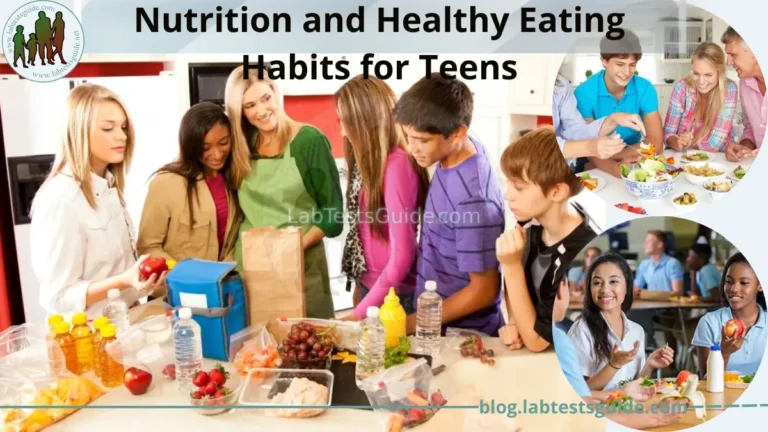Separation anxiety is a common and natural part of a child’s development, typically emerging around the age of six months and peaking between one and three years old. It is a normal response to the realization that they are separate individuals from their primary caregivers. While it is a healthy sign of the child’s bond with their parents or caregivers, it can also be a challenging and distressing experience for both the child and the adults involved. As a parent or caregiver, understanding separation anxiety and learning effective ways to support your child through this phase is essential for their emotional well-being and overall development.

This guide aims to provide parents and caregivers with valuable insights and practical strategies to help their child cope with separation anxiety. We will explore the signs and factors contributing to separation anxiety, the importance of building a secure attachment, and various techniques to ease the child’s transition during separations. Additionally, we will discuss effective communication with the child, collaboration with childcare providers and teachers, and how to manage your own emotions during this sensitive time. Remember, every child is unique, and the process of overcoming separation anxiety may require patience, empathy, and flexibility as you navigate this critical phase together.
What is Separation Anxiety in Children?
- Definition: Separation anxiety in children refers to a normal stage of development where a child becomes emotionally distressed when separated from their primary caregiver or a person they are most attached to.
- Age Range: Separation anxiety typically begins around 6 to 8 months of age and can peak between 1 to 3 years old, but it can vary from child to child.
- Emotional Response: During separation anxiety, children may exhibit clingy behavior, become visibly upset, cry, or throw tantrums when separated from their attachment figure.
- Fear of Abandonment: Children with separation anxiety fear that their caregiver will not return or will leave them permanently, causing significant distress.
- Transitional Objects: Children often seek comfort from familiar objects, such as a favorite toy or blanket, to help ease the separation anxiety when apart from their caregiver.
- Context-Specific: Separation anxiety tends to be context-specific. It may occur primarily during certain situations, such as drop-offs at school, daycare, or leaving a child with a new caregiver.
- Attachment Bond: The intensity of separation anxiety is closely related to the strength of the attachment bond between the child and their caregiver.
- Normal Developmental Phase: Separation anxiety is a healthy and expected part of a child’s emotional development, indicating that they have formed a strong attachment to their caregiver.
- Gradual Improvement: As children grow and develop, separation anxiety typically decreases over time, and they become more comfortable with brief separations.
- Parental Support: Parents and caregivers play a crucial role in helping children navigate through separation anxiety by providing reassurance, consistency, and understanding during these transitions.
How to Ease Separation Anxiety in Children:
- Gradual Separation: Start with short separations and gradually increase the time spent apart. This helps the child become accustomed to the idea of being away from their caregiver.
- Provide Reassurance: Offer verbal and physical reassurance before leaving and upon return. Let the child know that you will come back and stick to your promises.
- Create a Goodbye Ritual: Develop a consistent and comforting goodbye routine, such as a special handshake, a kiss, or a wave, to help the child feel more secure during separations.
- Transitional Objects: Allow the child to bring a familiar object, like a favorite toy or blanket, which can provide comfort and familiarity during times of separation.
- Stay Calm and Positive: Display confidence and positivity during drop-offs. Children can sense their caregiver’s emotions, so remaining calm can help them feel more at ease.
- Practice Absences: Practice short absences even when you are at home. Step into another room for a few minutes, then return, gradually increasing the duration to build trust.
- Stay Connected: If possible, use video calls or messages during longer separations to maintain a connection with your child and offer reassurance.
- Involve the Child: Engage the child in activities with other trusted adults or children to encourage positive social interactions and build their confidence in new situations.
- Talk About Feelings: Encourage your child to express their feelings and fears. Listen attentively and validate their emotions, providing a safe space for them to communicate openly.
- Avoid Sneaking Away: Sneaking away during separations can lead to a breakdown of trust. Always say goodbye and explain when you’ll be back.
- Praise Independence: Acknowledge and praise your child’s moments of bravery and independence, even in small situations, to boost their self-confidence.
Factors Contributing to Separation Anxiety:
- Attachment Style: The child’s attachment style with their primary caregiver plays a significant role in separation anxiety. Children with a strong attachment bond may experience more intense anxiety when separated, as they have formed a deep emotional connection with their caregiver.
- Developmental Stage: Separation anxiety is a normal developmental phase that emerges as children become more aware of their individuality and start to differentiate themselves from their caregivers. It often peaks around 1 to 3 years old.
- Environmental Changes: Major life changes, such as moving to a new home, starting school, or experiencing significant disruptions in their daily routine, can trigger separation anxiety in children.
- Parental Behavior: Parental behavior and responses to the child’s distress during separations can impact their level of anxiety. If caregivers show excessive concern or anxiety themselves, it can reinforce the child’s fears.
- Previous Experiences: Past traumatic experiences, such as a prolonged separation, loss of a loved one, or a frightening event, can contribute to heightened separation anxiety in children.
- Temperament: Each child has a unique temperament, which can influence their reaction to separations. Some children are naturally more sensitive and may experience stronger emotions during separations.
- Parental Absences: Frequent or prolonged absences of a parent or primary caregiver due to work, travel, or other commitments can contribute to separation anxiety in some children.
- Socialization: Children who have had limited exposure to social settings or interactions with unfamiliar people may find it more challenging to adjust to new environments, leading to separation anxiety.
- Family Dynamics: The family’s overall dynamics, including the relationships between family members and the level of support and emotional security provided, can impact a child’s separation anxiety.
- Fear of the Unknown: Children might feel anxious about the unfamiliar environment they will be in or the uncertainty of when their caregiver will return, leading to separation anxiety.
- Parental Stress: High levels of parental stress or unresolved parental anxiety can affect a child’s emotional well-being and contribute to separation anxiety.
Creating a Secure Attachment:
Here are some key strategies for creating a secure attachment with your child.
- Responsive Parenting: Be attuned to your child’s needs and respond promptly and consistently. When the child feels that their needs are met, they develop trust in their caregivers and feel more secure.
- Emotional Availability: Show warmth, affection, and emotional availability to your child. Offer hugs, cuddles, and verbal affirmations of love to reinforce the emotional connection.
- Engage in Play: Engage in play with your child regularly. Play provides an opportunity for bonding, communication, and understanding the child’s emotions and inner world.
- Eye Contact and Smiling: Maintain eye contact and smile during interactions with your child. These non-verbal cues foster a sense of connection and reassurance.
- Predictable Routines: Establish consistent and predictable routines, as they provide a sense of stability and safety for the child.
- Be Attentive and Listen: Pay attention to your child when they talk or express their feelings. Active listening communicates that their emotions are valued and heard.
- Provide a Safe Base: Offer a safe and secure base from which your child can explore the world. Knowing they can return to you for comfort and support enhances their confidence.
- Positive Discipline: Use positive discipline strategies that focus on teaching and guiding rather than punitive measures. This approach helps the child feel loved and respected even when they make mistakes.
- Encourage Independence: Support your child’s exploration and independence while offering a secure base for them to return to when needed.
- Parental Self-Reflection: Reflect on your own upbringing and emotional responses to better understand how they might influence your parenting. Being aware of your emotions helps in providing a more supportive environment for your child.
- Be Patient and Understanding: Be patient with your child’s emotions and challenges. Understand that separation anxiety is a normal part of development and requires understanding and gentle guidance.
- Celebrate Connection: Celebrate and cherish the moments of connection with your child. These positive interactions build trust and reinforce the attachment bond.
Preparing for Separation:
- Gradual Exposure: Start exposing your child to short separations in a familiar and safe environment. This could mean leaving them with a trusted family member or close friend for brief periods.
- Practice Separation Routines: Create a separation routine that you follow consistently during shorter separations. This routine will provide predictability and comfort during longer separations.
- Positive Association: Associate the separation with positive experiences. Talk about the exciting activities they will do, the new friends they’ll meet, or the fun they’ll have when you’re apart.
- Visit the New Environment Together: If possible, visit the new setting, such as a new school or daycare, with your child before the official start date. Familiarize them with the surroundings and introduce them to teachers or caregivers.
- Meet Caregivers in Advance: Introduce your child to their new caregivers or teachers beforehand, so they can start building a connection and feel more at ease.
- Read Books or Watch Videos: Read books or watch videos together about children going through similar experiences. This can help your child understand that others have faced similar situations and have managed well.
- Encourage Independence: Foster a sense of independence in your child by allowing them to do age-appropriate tasks on their own. This will boost their confidence and readiness for the separation.
- Talk About Feelings: Encourage your child to express their feelings about the upcoming separation. Validate their emotions and provide reassurance that it’s okay to feel anxious or unsure.
- Practice Coping Strategies: Teach your child some coping strategies to manage their anxiety during separations. Deep breaths, counting, or thinking about something happy can be helpful techniques.
- Play Pretend Separations: Engage in pretend play where you take turns being the one who leaves and returns. This can help them feel more in control of the situation and understand the process better.
- Plan a Goodbye Ritual: Establish a special goodbye ritual that your child can engage in when you leave. This ritual can provide comfort and a sense of connection during separations.
Strategies to Ease Separation Anxiety:
Here are some effective techniques.
- Consistency and Predictability: Establish consistent routines and schedules, as predictability helps children feel secure and reduces anxiety during transitions.
- Transitional Objects: Allow your child to bring a familiar object, such as a favorite toy or blanket, which can provide comfort and a sense of familiarity during separations.
- Gradual Exposure: Start with short separations and gradually increase the time spent apart. This progressive approach helps the child adjust to longer periods of separation.
- Offer Reassurance: Provide verbal and physical reassurance before leaving and upon return. Let your child know that you will come back and stick to your promises.
- Engage in Play: Engage in play and spend quality time with your child before separations. This reinforces the emotional connection and creates positive associations with your departure.
- Set Up a Transition Ritual: Create a special goodbye ritual, such as a goodbye song or a secret handshake, to help your child feel more secure during departures.
- Stay Calm and Positive: Maintain a calm and positive demeanor during drop-offs. Children can sense their caregiver’s emotions, so staying composed can help them feel more at ease.
- Involve the Child: Involve your child in the separation process by explaining what will happen during your absence and encouraging their participation in preparing for the separation.
- Practice Short Separations at Home: Practice short separations even when you are at home. Step into another room for a few minutes, then return, gradually increasing the duration to build trust.
- Encourage Independence: Foster independence in your child by allowing them to complete age-appropriate tasks on their own. This boosts their self-confidence and prepares them for separations.
- Use Imaginative Play: Use imaginative play to role-play separation scenarios with your child. This can help them understand the concept of temporary departures and returns.
- Stay Connected Virtually: If possible, use video calls or messages during longer separations to maintain a connection with your child and offer reassurance.
- Limit Farewell Dramas: Avoid prolonging the goodbye process. Make the farewell brief and reassuring to prevent unnecessary stress.
- Provide Positive Feedback: Praise your child’s moments of bravery and coping during separations. Positive reinforcement reinforces their ability to handle separations.
- Collaborate with Caregivers: If your child attends daycare or school, collaborate with the caregivers to implement a consistent approach in easing separation anxiety.
Communicating with Your Child:
Here are some tips for communicating with your child.
- Active Listening: Pay full attention to what your child is saying and show genuine interest in their thoughts and feelings. This helps them feel valued and understood.
- Validate Their Emotions: Acknowledge and validate your child’s feelings, even if they seem irrational to you. Let them know that it’s okay to feel scared or anxious, and that you are there to support them.
- Use Simple and Clear Language: Tailor your language to your child’s age and understanding. Use simple and clear words to ensure they grasp what you’re saying.
- Encourage Expression Through Play: Young children often communicate through play. Engage in imaginative play or provide art materials for them to express their emotions and experiences.
- Ask Open-Ended Questions: Instead of yes-or-no questions, ask open-ended questions that invite your child to share more about their thoughts and feelings.
- Be Patient: Children may take time to express themselves fully. Be patient and avoid rushing them to communicate.
- Maintain Eye Contact: Maintain eye contact while communicating with your child. It helps create a sense of connection and shows that you are fully engaged in the conversation.
- Avoid Interrupting: Allow your child to complete their thoughts without interrupting. This shows respect for their ideas and encourages them to express themselves freely.
- Stay Calm and Reassuring: Keep a calm and reassuring tone while discussing separation or any other emotional topic. Your demeanor can influence how your child perceives the situation.
- Use Stories and Books: Utilize stories and books that address separation anxiety or emotions to help your child understand and cope with their feelings.
- Model Healthy Communication: Demonstrate healthy communication with others, including your child, to teach them how to express themselves effectively.
- Share Your Feelings: Be open about your feelings, especially during separations. If you also feel sad about leaving them, it’s okay to share that, but also express confidence that you will be back.
- Create a Safe Environment: Create an environment where your child feels comfortable expressing themselves without fear of judgment or criticism.
- Be Available: Make time for one-on-one conversations with your child. Being available when they want to talk fosters a strong and trusting relationship.
- Offer Affection: Physical touch, such as hugs and cuddles, can be reassuring and comforting for your child, especially during emotional moments.
Working with Childcare Providers and Teachers:
Here are some effective strategies for working together with them.
- Open Communication: Establish open and transparent communication with the childcare providers or teachers. Share information about your child’s personality, preferences, and any specific needs they may have.
- Provide Information: Offer details about your child’s separation anxiety, including any coping mechanisms that have worked well at home. This helps caregivers understand how to support your child during separations.
- Create a Supportive Environment: Work together to create a supportive and nurturing environment for your child. Encourage them to be sensitive to your child’s emotional needs during drop-offs and throughout the day.
- Transition Rituals: Share any special goodbye rituals or routines you have established with your child, so they can be incorporated into the daycare or school setting.
- Consistency in Approaches: Encourage consistency in approaches for managing separation anxiety. Consistent routines and responses from both home and the childcare setting provide stability for your child.
- Visit the Setting Together: If possible, arrange a visit to the childcare setting with your child before their official start date. This allows them to become familiar with the environment and meet their caregivers or teachers in advance.
- Stay Informed: Stay informed about your child’s experiences at the daycare or school. Regularly communicate with caregivers to understand how your child is adapting and coping with separations.
- Feedback and Updates: Provide feedback to the childcare providers or teachers about your child’s progress and any changes you notice in their behavior or emotions during separations.
- Ask for Support: Don’t hesitate to ask for extra support from the childcare providers or teachers during the initial phase of separation anxiety. They are experienced in helping children navigate through this process.
- Consoling Strategies: Share any consoling strategies or comfort items your child relies on at home, so caregivers can use them if needed.
- Collaborate on Solutions: If you encounter challenges related to separation anxiety, work collaboratively with caregivers to find solutions that benefit your child.
- Encourage Positive Reinforcement: Encourage caregivers to offer positive reinforcement when your child displays bravery during separations. Positive feedback reinforces their confidence.
Coping with Your Own Emotions:
Here are some strategies to help you manage your emotions effectively.
- Recognize Your Feelings: Acknowledge and recognize your own emotions regarding the upcoming separation. It’s normal to feel anxious or worried, but being aware of these emotions is the first step in managing them.
- Practice Self-Compassion: Be kind to yourself and understand that it’s natural to have mixed emotions about your child’s separation. Give yourself permission to feel and process your emotions without judgment.
- Seek Support: Talk to friends, family, or other parents who have experienced similar situations. Sharing your feelings with others can be cathartic and provide valuable insights.
- Maintain a Positive Outlook: Focus on the positive aspects of your child’s new experiences and the growth opportunities that come with separation.
- Take Care of Yourself: Engage in self-care activities that help you relax and reduce stress. This could include hobbies, exercise, meditation, or spending time with loved ones.
- Establish a Support Network: Surround yourself with supportive individuals who can lend a listening ear and offer encouragement during this phase.
- Set Realistic Expectations: Understand that separation anxiety is a normal part of your child’s development, and it will likely improve over time with consistent support.
- Stay Engaged: Stay engaged in your child’s experiences and celebrate their achievements and milestones, even when you are not physically present.
- Maintain Communication: Stay in touch with the childcare providers or teachers to receive updates on your child’s progress. Knowing that your child is doing well can provide reassurance.
- Focus on the Present: Avoid dwelling on potential negative outcomes or worrying excessively about the future. Stay focused on the present moment and the steps you can take to support your child.
When to Seek Professional Help:
- Extreme and Prolonged Distress: If your child’s separation anxiety persists for an extended period and seems excessive or overwhelming, professional guidance may be beneficial.
- Interference with Daily Functioning: If the anxiety significantly interferes with your child’s daily life, such as causing problems with eating, sleeping, or social interactions, professional support is essential.
- Refusal to Attend School or Activities: If your child consistently refuses to attend school, daycare, or other activities due to extreme separation anxiety, it may indicate a need for intervention.
- Physical Symptoms: If your child experiences severe physical symptoms, such as frequent headaches, stomachaches, or panic attacks related to separation anxiety, professional assessment is recommended.
- Regression in Behavior: If your child regresses in behaviors they have previously mastered, such as potty training or language skills, in response to separation anxiety, professional evaluation may be necessary.
- Significant Changes in Mood: If your child shows persistent signs of sadness, fear, or emotional distress that are not improving with time, expert support can be beneficial.
- Intense Clinginess: If your child’s clinginess becomes extreme, making it challenging for them to explore or engage with others, it might be helpful to seek professional advice.
- Social Withdrawal: If your child avoids social interactions and shows a reluctance to engage with peers or caregivers, professional assistance may be needed to address the underlying concerns.
- History of Trauma or Loss: If your child has a history of trauma, loss, or significant life changes, separation anxiety may be more complex, requiring professional guidance to address these underlying issues.
- Parental Concerns: If you, as a parent or caregiver, are finding it challenging to cope with your child’s separation anxiety or feel overwhelmed, seeking support from a professional can be beneficial for both you and your child.
FAQs:
What is separation anxiety in children?
Separation anxiety in children is a normal developmental stage where a child becomes emotionally distressed when separated from their primary caregiver or a person they are most attached to.
At what age does separation anxiety typically start?
Separation anxiety typically starts around 6 to 8 months of age and can peak between 1 to 3 years old, but it can vary from child to child.
How can I help my child cope with separation anxiety?
To help your child cope with separation anxiety, create a secure attachment, practice gradual exposure to separations, provide reassurance, and encourage independence in age-appropriate ways.
Is separation anxiety a sign of poor parenting?
No, separation anxiety is a normal part of a child’s development and not a reflection of poor parenting. It shows that the child has formed a strong attachment to their caregiver.
How long does separation anxiety last in children?
The duration of separation anxiety can vary from child to child. For some, it may be short-lived, while for others, it may last for a few months or longer. Generally, it tends to improve as the child grows and becomes more accustomed to separations.
Is it okay to leave my child if they have separation anxiety?
Yes, it is generally okay to leave your child even if they have separation anxiety. Gradual exposure to separations can help them adapt and become more comfortable with the process over time. Ensure you provide reassurance and support during the transition.
When should I seek professional help for my child’s separation anxiety?
Consider seeking professional help if your child’s separation anxiety is extreme, prolonged, interferes with daily functioning, or causes significant distress. Additionally, if you have concerns about your child’s emotional well-being, consulting a pediatrician or child psychologist can be beneficial.
Can separation anxiety be prevented in children?
While separation anxiety is a normal part of development, fostering a secure attachment, providing consistency and support, and gradually exposing your child to separations can help ease the process.
How can I prepare my child for starting school or daycare?
Prepare your child for starting school or daycare by visiting the new setting together, establishing a routine, introducing them to caregivers or teachers in advance, and discussing what to expect during their time away.
Is it normal for parents to feel anxious about leaving their child during separations?
Yes, it is entirely normal for parents to feel anxious about leaving their child during separations. It shows that you care deeply for your child. Practice self-compassion and seek support from others when needed.
Conclusion:
In conclusion, separation anxiety is a normal and expected phase of a child’s development, signifying a strong attachment to their primary caregivers. It is essential for parents and caregivers to understand this natural process and provide appropriate support to help children cope with separations effectively. By creating a secure attachment, using gradual exposure, offering reassurance, and fostering independence, parents can ease the child’s anxiety during separations. Open communication with childcare providers and teachers can also enhance the child’s experience in new settings. Additionally, taking care of one’s own emotions and seeking professional help when necessary are essential components of effectively navigating through this developmental stage. With patience, empathy, and consistent efforts, parents and caregivers can foster a sense of security and emotional well-being in their children, helping them build resilience for future challenges.






